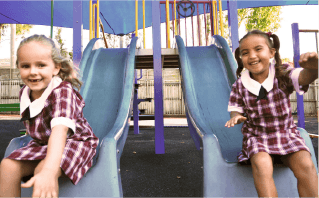
Anger is a natural human emotion that everyone experiences at times. However, for children, anger can be difficult to manage, especially when their emotions seem to get the best of them. If your child has difficulty regulating angry feelings, there are things you can do to help them cope. In this article, we discuss 7 anger management strategies for children.
7 Anger Management Strategies for Children
Understand the difference between anger and aggressiveness
While anger is a normal, healthy emotion, aggressiveness, on the other hand, is not. Many kids struggle to understand the difference between angry feelings and aggressive behaviour. Frustration and anger can quickly turn into defiance, disrespect, aggression, and temper tantrums when kids don’t know how to deal with their emotions.
Teach them how to name the feeling
Teach your child how to name their feelings. So often, kids get confused about their feeling because they don’t know exactly what they are feeling. The lack of options for describing the feeling leads them to resort to anger because it is one of the first feelings kids learn to identify. When kids have more vocabulary to explain what they feel, they are more likely to get it right. You can use the Superpower Kids RIGHT NOW I FEEL printable to help your child name his feeling.
Explain the difference between feelings and behaviour
Aggressive behaviour stems from various uncomfortable feelings, like sadness or embarrassment. Help your child understand that all feelings are allowed, but not all behaviours are accepted. For example, you could say, “It’s OK to feel angry, but it is not OK to break the toy.”
Help them understand where their feelings are coming from
Often anger and aggressive behaviour happen for a reason. Help your child identify what caused them to feel angry and help them find other ways to deal with those feelings. For example, tell your child: “You are FEELING disappointed BECAUSE your friends aren’t coming over anymore.” Help them identify the emotion and give them ideas on how to cope, like receiving a hug from you or taking ten mindful breaths.
Teach them how to calm down when they’re angry
Some kids get overwhelmed by anger and lash out. Teach your child how to calm down on their own when they are feeling angry. For example, you could say, “I know you feel angry right now, but you might feel better if you take some deep breaths”. For younger children, it’s helpful to remind them of what breathing looks like – for example, holding your tummy while taking slow deep breaths helps give kids control over the anger. Assisting kids to practice calming techniques can help them handle anger better in the moment.
Encourage them to use self-help skills
Above all, show your child that anger is not something they need to hide or suppress; anger is an emotion everyone feels at times, and there are healthy ways to manage anger. You can remind them of the anger management skills, like taking ten slow breaths or listening to music. Next time they are angry, help them remember what they did last time to calm down and how good it felt afterwards.
Create a calm down kit
Ask your child, “What could you do instead of hitting?” to help your child identify strategies that might be helpful. You could also create a calm down kit that they can use when they’re upset.
Fill a box with items that can help them calm down, such as a colouring book and crayons, lotion that smells good, soothing music, or use proprioceptive activities. Engaging their senses can help calm their mind and body.
Research has shown that anger often stems from fear or vulnerability, not disrespect. When kids feel safe, supported, and acknowledged by their parents, anger is less likely to get the best of them. With some extra guidance from you, your child will learn how to express anger in healthy ways so they can lead a calmer life at home and school.
If you are a parent looking for anger management strategies for your child, we have the perfect guide for you. Our Self-control guide is packed with information and activities that can help children control their emotions and stay calm in difficult situations. The best part? The guide is available for purchase on our website. So don’t wait any longer – get our Self-control Value Guide today.
Related Articles
6 Ways to Talk About Big Feelings




